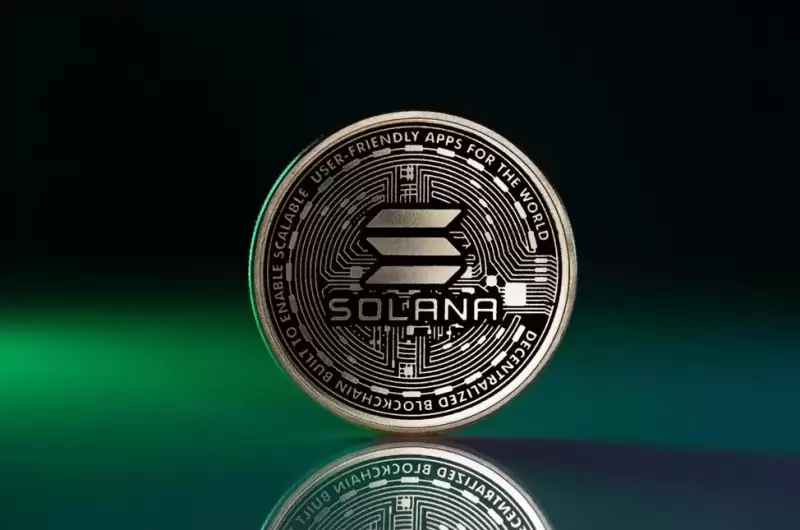 |
|
 |
|
 |
|
 |
|
 |
|
 |
|
 |
|
 |
|
 |
|
 |
|
 |
|
 |
|
 |
|
 |
|
 |
|
Cryptocurrency News Articles
Solana Foundation Has Tightened Its Validator Strategy to Boost Network Decentralization
Apr 28, 2025 at 03:36 am

Solana Foundation has adjusted its validator strategy to promote network decentralization and reduce reliance on its support. As of April 2025, the Foundation introduced a policy where, for every new validator added to its Delegation Program (SFDP), three existing validators are removed if they meet specific criteria.
This policy, which began with the addition of Blockfolio to the SFDP, will see three existing validators removed. The departing validators are NodeReal, CCVC, and STiC Pay, leaving the SFDP with 15 validators.
To be removed from the program, validators must have been in the SFDP for over 18 months and have less than 1,000 SOL in external stake. Moreover, they must not be a Node as they transition out of the program.
This move aims to encourage validators to attract independent stake and operate self-sufficiently. Concerns have been raised about many validators, in some cases up to 90-100% of their stake, relying heavily on Foundation backing.
Research from Helius indicates that over half of Solana’s validators could become unprofitable without this support, highlighting the challenge of high on-chain governance costs. At present, smaller validators may struggle to maintain profitability and attract independent stake, potentially leading to consolidation or exits.
The policy is part of a broader effort to improve the Nakamoto Coefficient, a measure of decentralization, by reducing stake concentration. However, the Foundation has not yet responded to ongoing discussions about the policy’s impact.
By prioritizing validators with independent stake and phasing out those overly reliant on Foundation support, the policy aims to improve the Nakomoti Coefficient, reducing the risk of centralized control and enhancing network resilience.
Smaller validators, defined as those with less than 1,000 SOL in external stake, will be removed from the program after 18 months, which could render many unprofitable.
With over half of validators potentially unviable without Foundation backing, according to Helius data, smaller validators may struggle to attract independent stake, leading to consolidation or exits.
This policy change is part of a broader shift in cryptocurrency toward on-chain governance, where token holders vote on network policies and upgrades.
Cardano introduced on-chain governance with the Chang hard fork in September 2024, establishing a model with separate governance branches, a legislative body, and a constitutional committee. ADA holders can delegate voting power to Delegate Representatives (DReps), who influence network decisions, including validator (stake pool) policies.
Cardano’s stake pools are community-operated, with rewards tied to delegation from ADA holders. The governance model encourages decentralization by allowing token holders to choose stake pools, reducing reliance on centralized entities.
Unlike Solana’s Foundation-driven staking, Cardano’s approach empowers the community to incentivize validators through delegation, fostering a competitive validator ecosystem.
This democratic model enhances decentralization but risks low voter turnout, potentially concentrating influence among active DReps or large ADA holders. Compared to Solana, Cardano’s governance is less centralized, as it lacks a foundation dictating validator inclusion, but it faces challenges in ensuring broad participation.
Polkadot’s OpenGov model, implemented in 2023, uses on-chain governance where proposals are written in code, voted on transparently, and executed automatically upon approval. Token holders vote on network upgrades and validator policies, increasing trust through deterministic processes.
Validators in Polkadot are selected based on stake and performance, with nominators (token holders) choosing validators to back. The system incentivizes validators to attract independent stake, similar to Solana’s push for self-sufficiency. However, Polkadot’s governance is fully on-chain, contrasting with Solana’s off-chain Foundation-led decisions.
Polkadot’s transparent, community-driven model reduces centralized control compared to Solana’s Foundation policy. However, it requires active community participation, and “whale” token holders could dominate voting, mirroring Solana’s concern about stake concentration. Polkadot’s approach offers a more decentralized alternative but demands robust engagement to avoid governance capture.
Ethereum relies on off-chain governance through Ethereum Improvement Proposals (EIPs), discussed in forums, conferences, and GitHub. Core developers, node operators, and miners (pre-Merge) or validators (post-Merge) reach consensus informally, with no formal on-chain voting.
Since transitioning to Proof-of-Stake in 2022, Ethereum’s validators stake 32 ETH to participate, with rewards tied to performance. Unlike Solana’s Foundation staking, Ethereum has no central entity allocating stake; validators compete for community-driven delegation.
The ecosystem encourages decentralization through protocols like Lido, though concerns persist about Lido’s dominance (controlling ~30% of staked ETH). Ethereum’s decentralized validator model avoids Solana’s centralized Foundation control but faces risks of stake concentration in large staking pools. Its off-chain governance allows flexibility but can be slow and contentious, as
Disclaimer:info@kdj.com
The information provided is not trading advice. kdj.com does not assume any responsibility for any investments made based on the information provided in this article. Cryptocurrencies are highly volatile and it is highly recommended that you invest with caution after thorough research!
If you believe that the content used on this website infringes your copyright, please contact us immediately (info@kdj.com) and we will delete it promptly.
-

-

-

-

-

- Ethereum EIP-9698 Introduces a Deterministic Gas Limit Growth Model, Aiming to Increase TPS by 100 Times Over Four Years
- Apr 29, 2025 at 12:50 am
- Ethereum Foundation researcher Dankrad Feist introduced Ethereum EIP-9698, a proposal aiming to scale the network by increasing the Ethereum gas limit by 100 times over four years.
-
![Popcat [POPCAT] Explodes 99.24% as Memecoin Markets Enter a Whirlwind Month Popcat [POPCAT] Explodes 99.24% as Memecoin Markets Enter a Whirlwind Month](/assets/pc/images/moren/280_160.png)
-

-

-

- Stablecoin Giant Tether Has Amassing Over 7.7 Tons of Physical Gold to Back Its Tokenized Asset, Tether Gold
- Apr 29, 2025 at 12:40 am
- Tether revealed this via an attestation report, the first the company has issued for its digital asset Tether Gold (XAUT). By Antonius Claudius. Updated Apr 28, 2025.






















































![Popcat [POPCAT] Explodes 99.24% as Memecoin Markets Enter a Whirlwind Month Popcat [POPCAT] Explodes 99.24% as Memecoin Markets Enter a Whirlwind Month](/uploads/2025/04/29/cryptocurrencies-news/articles/popcat-popcat-explodes-memecoin-markets-enter-whirlwind-month/middle_800_457.webp)


